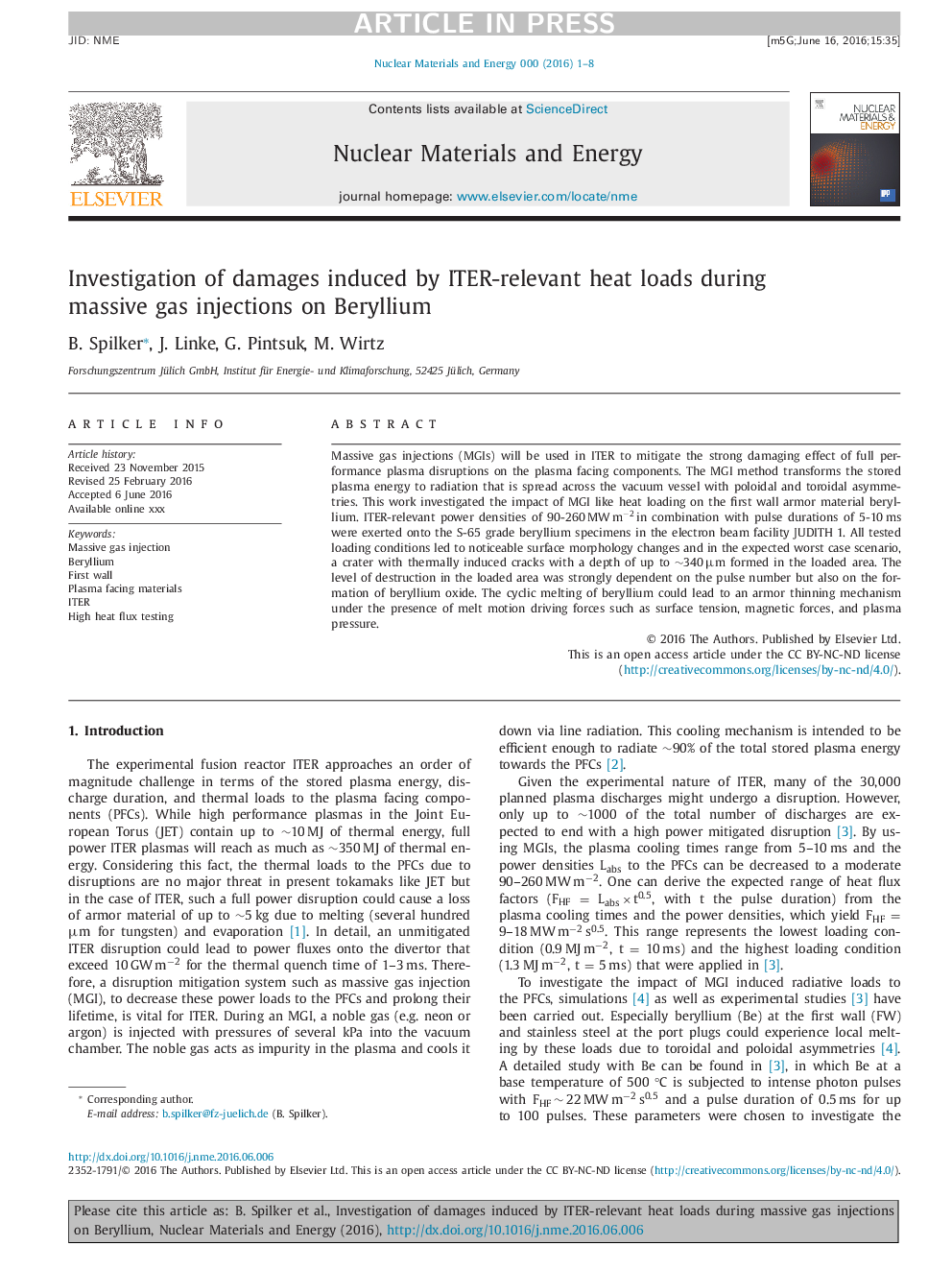| Article ID | Journal | Published Year | Pages | File Type |
|---|---|---|---|---|
| 7987605 | Nuclear Materials and Energy | 2016 | 8 Pages |
Abstract
Massive gas injections (MGIs) will be used in ITER to mitigate the strong damaging effect of full performance plasma disruptions on the plasma facing components. The MGI method transforms the stored plasma energy to radiation that is spread across the vacuum vessel with poloidal and toroidal asymmetries. This work investigated the impact of MGI like heat loading on the first wall armor material beryllium. ITER-relevant power densities of 90-260 MW mâ2 in combination with pulse durations of 5-10 ms were exerted onto the S-65 grade beryllium specimens in the electron beam facility JUDITH 1. All tested loading conditions led to noticeable surface morphology changes and in the expected worst case scenario, a crater with thermally induced cracks with a depth of up to â¼340 µm formed in the loaded area. The level of destruction in the loaded area was strongly dependent on the pulse number but also on the formation of beryllium oxide. The cyclic melting of beryllium could lead to an armor thinning mechanism under the presence of melt motion driving forces such as surface tension, magnetic forces, and plasma pressure.
Related Topics
Physical Sciences and Engineering
Energy
Nuclear Energy and Engineering
Authors
B. Spilker, J. Linke, G. Pintsuk, M. Wirtz,
